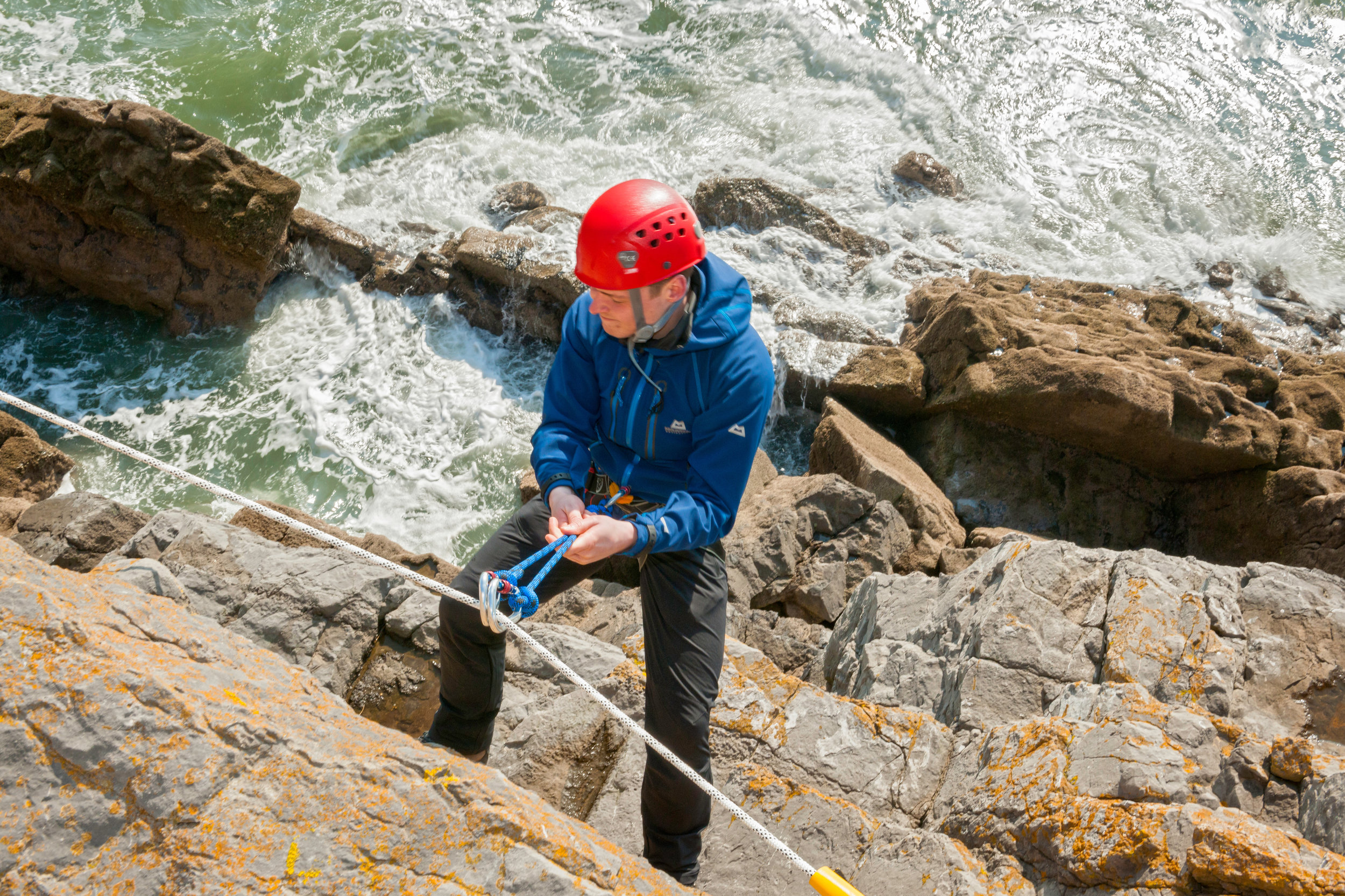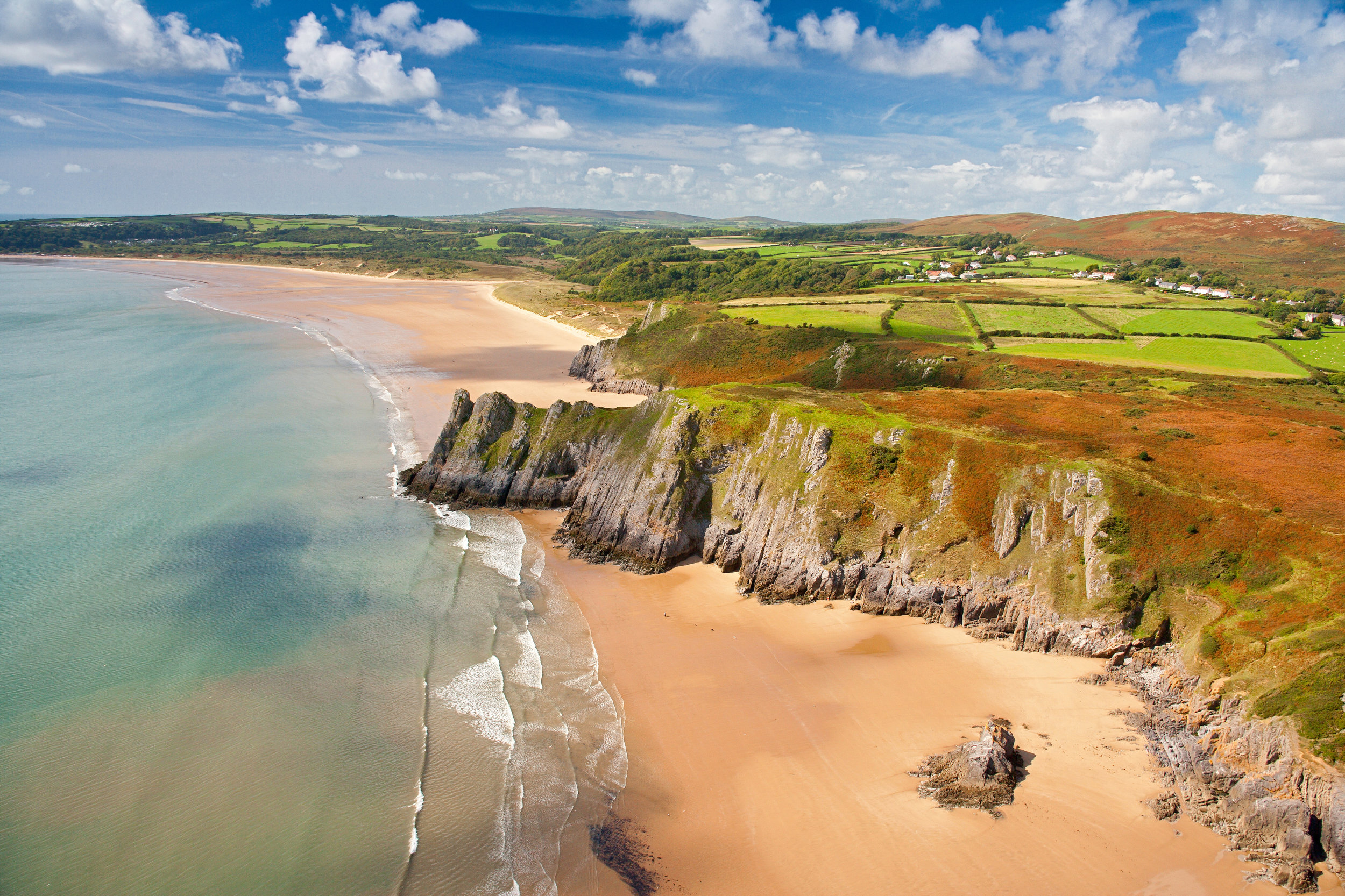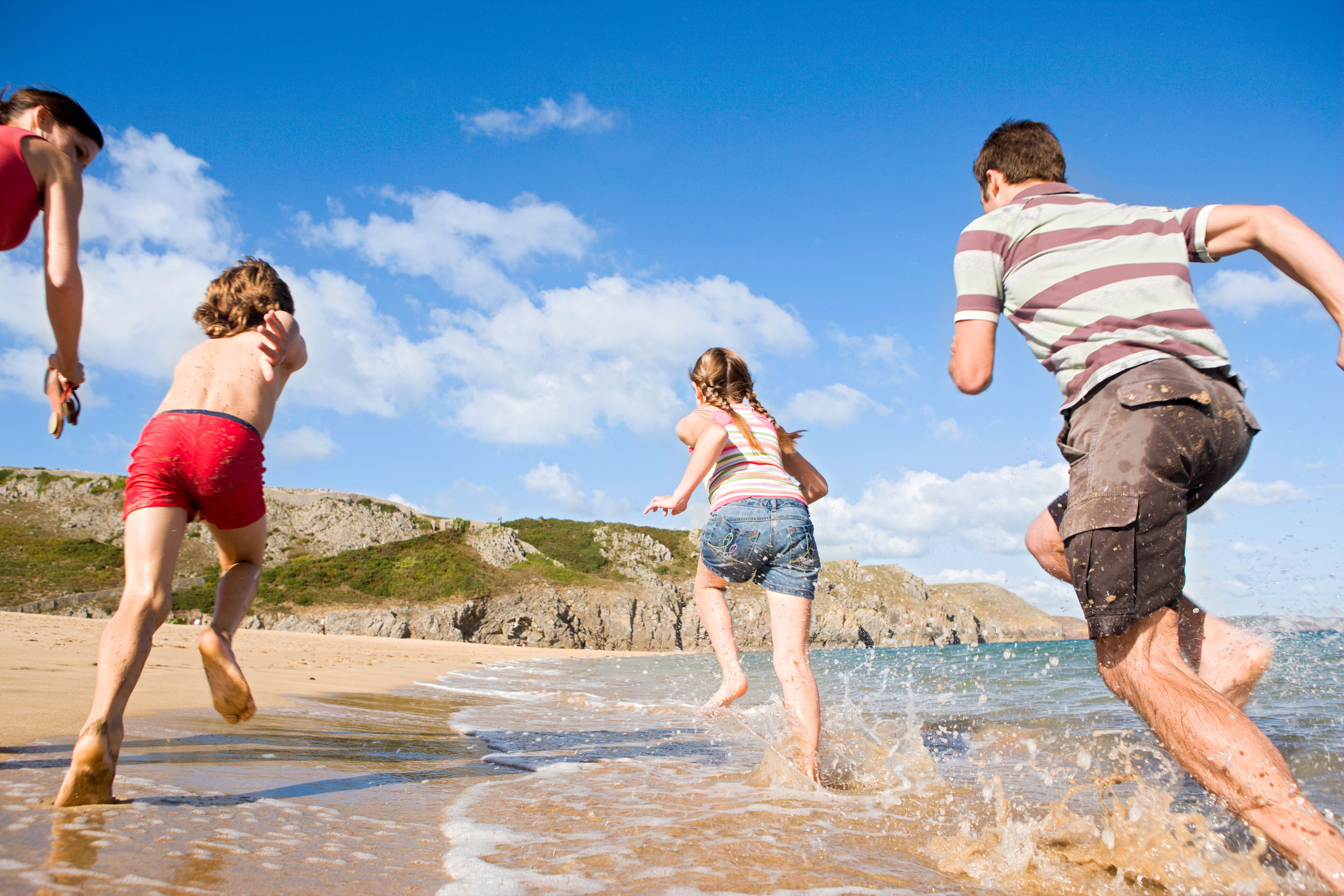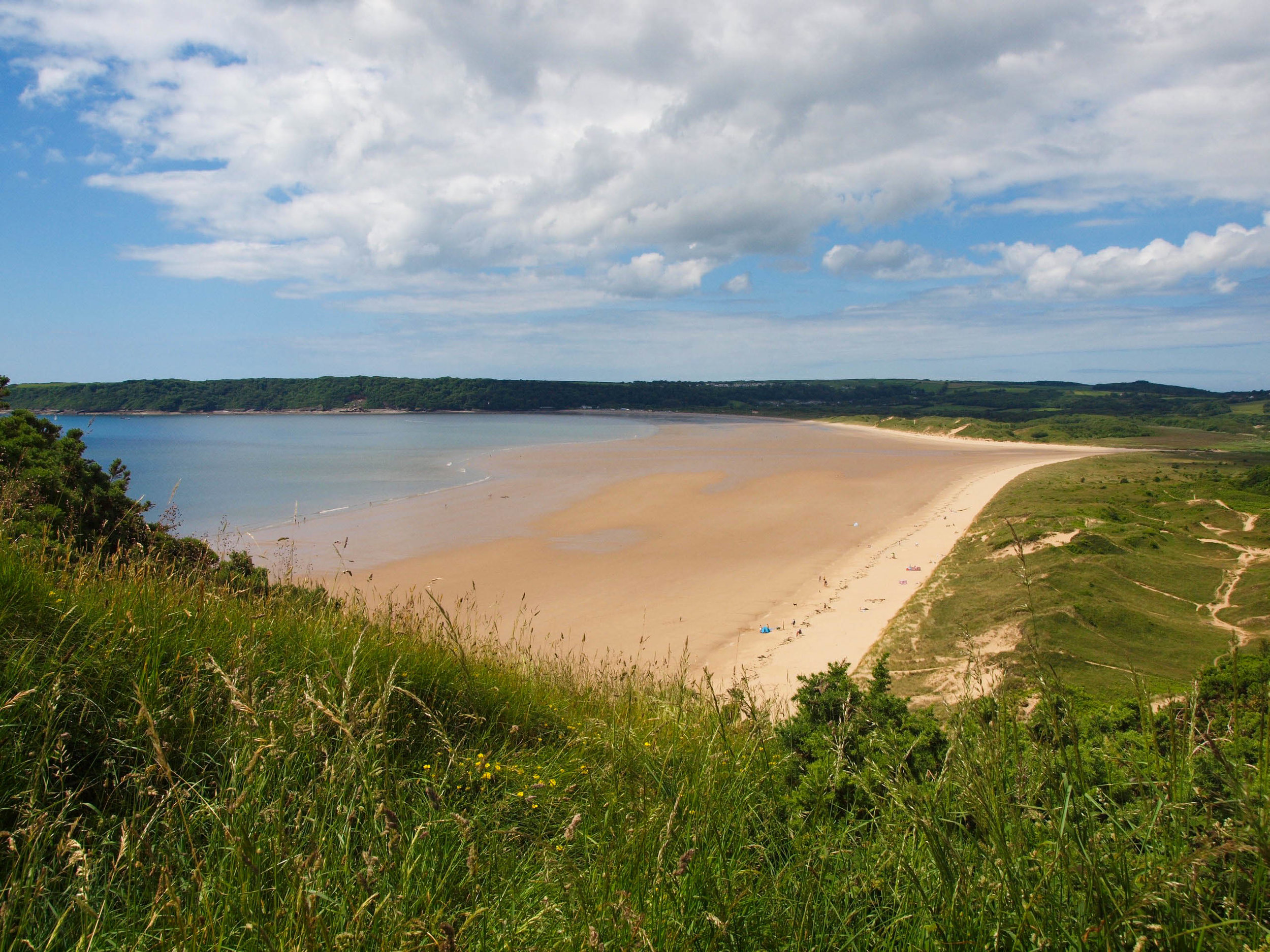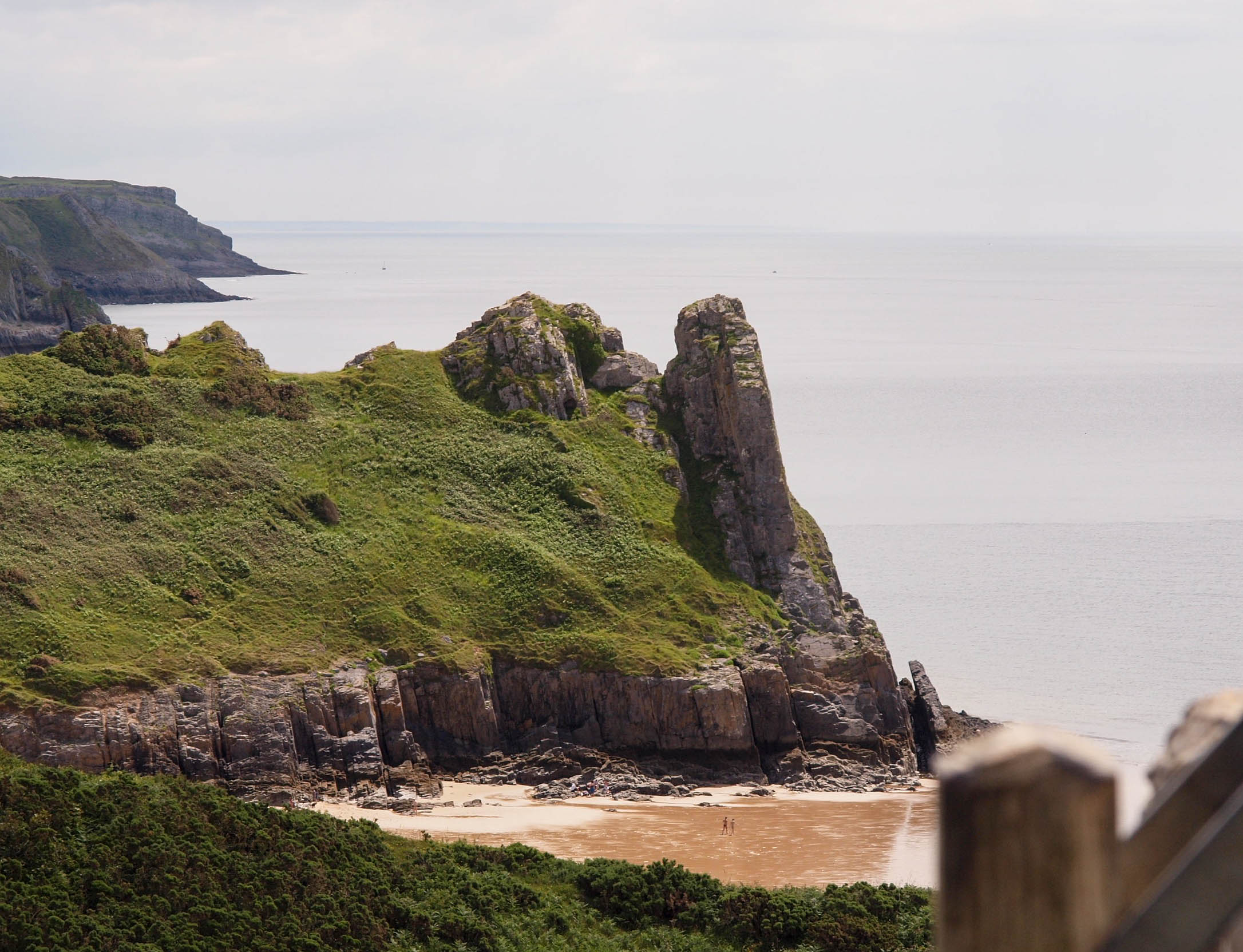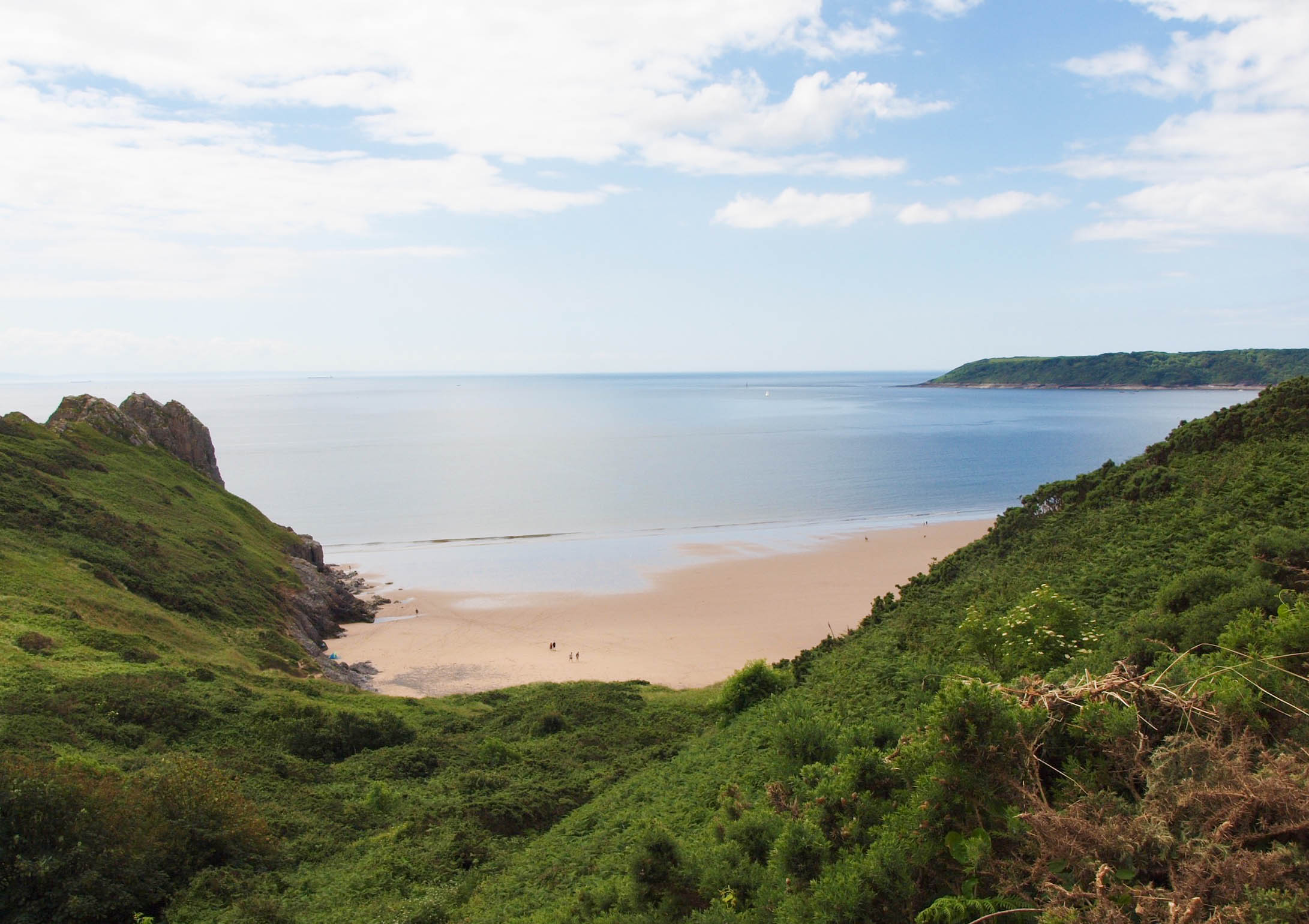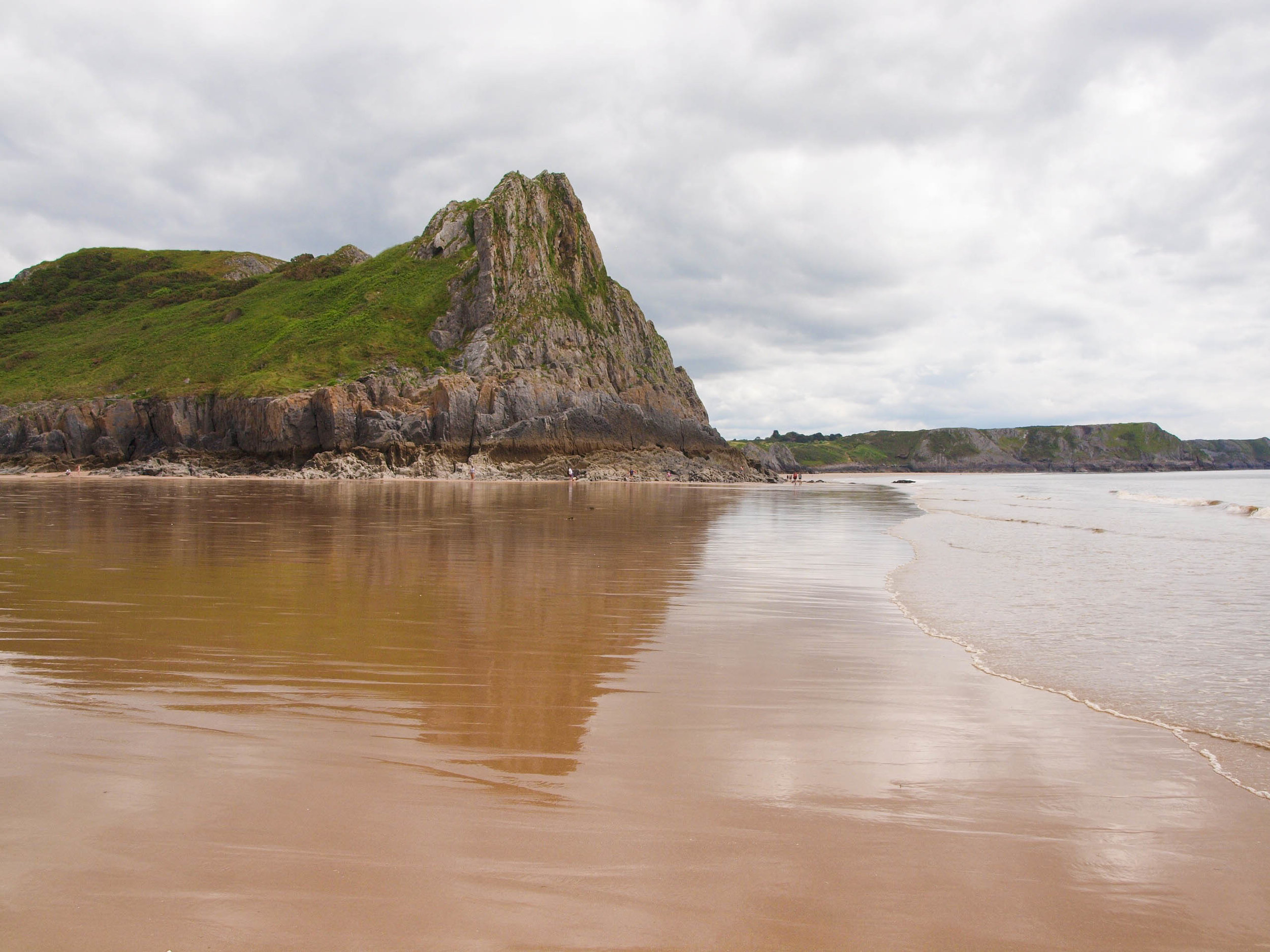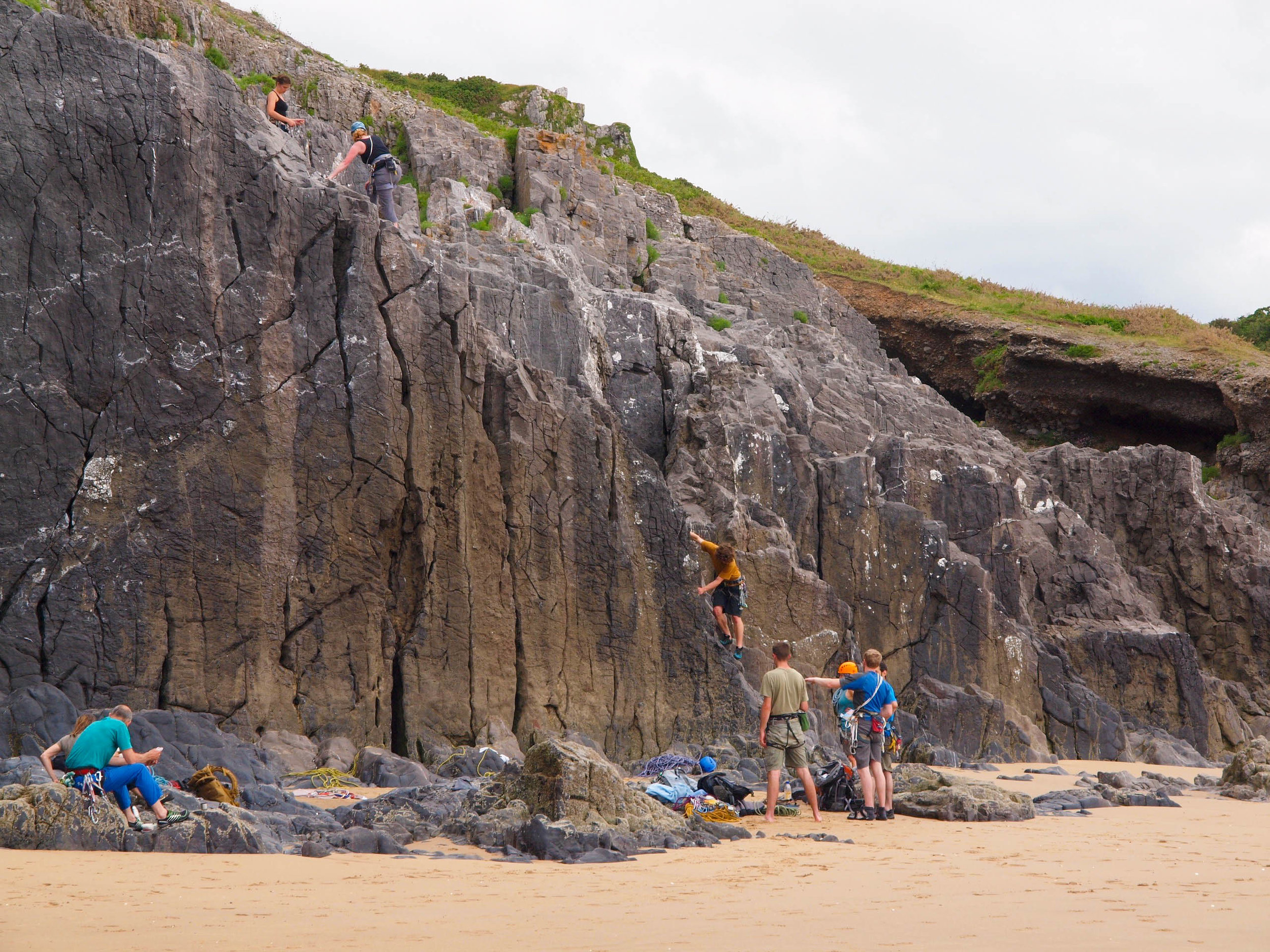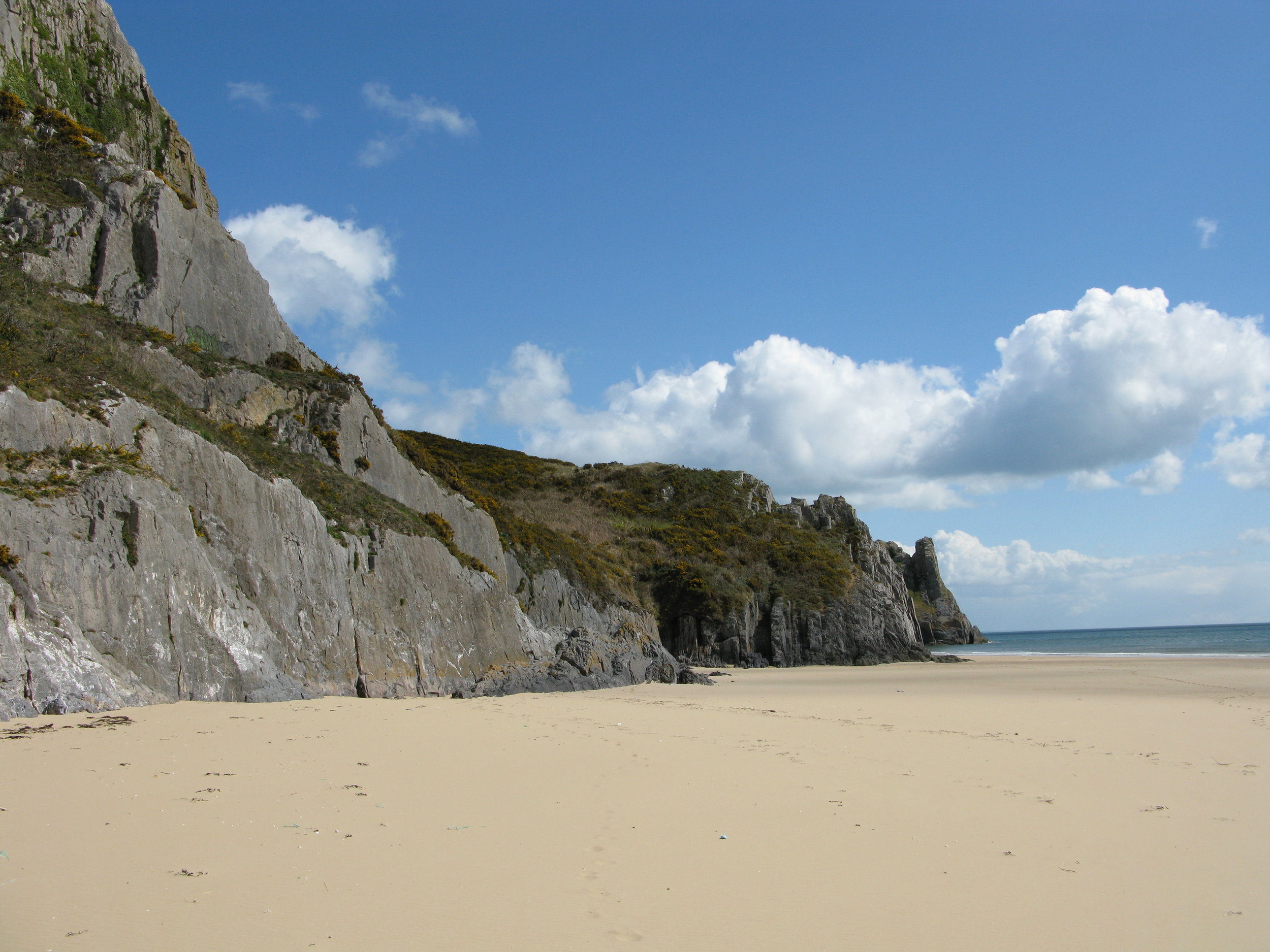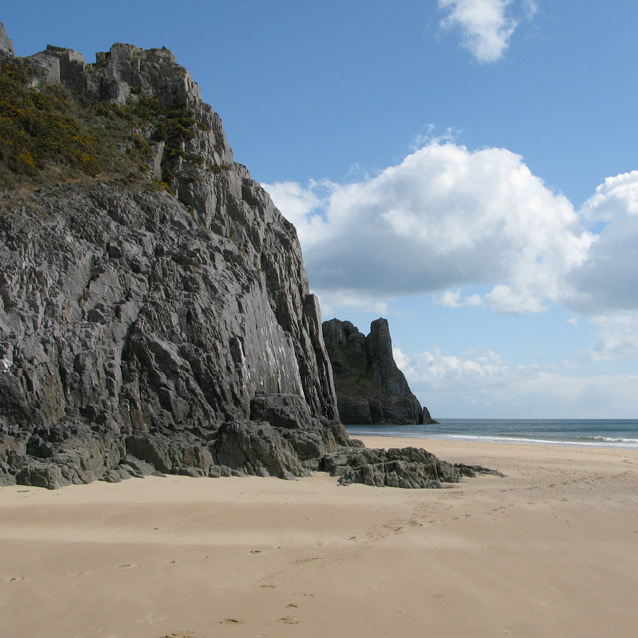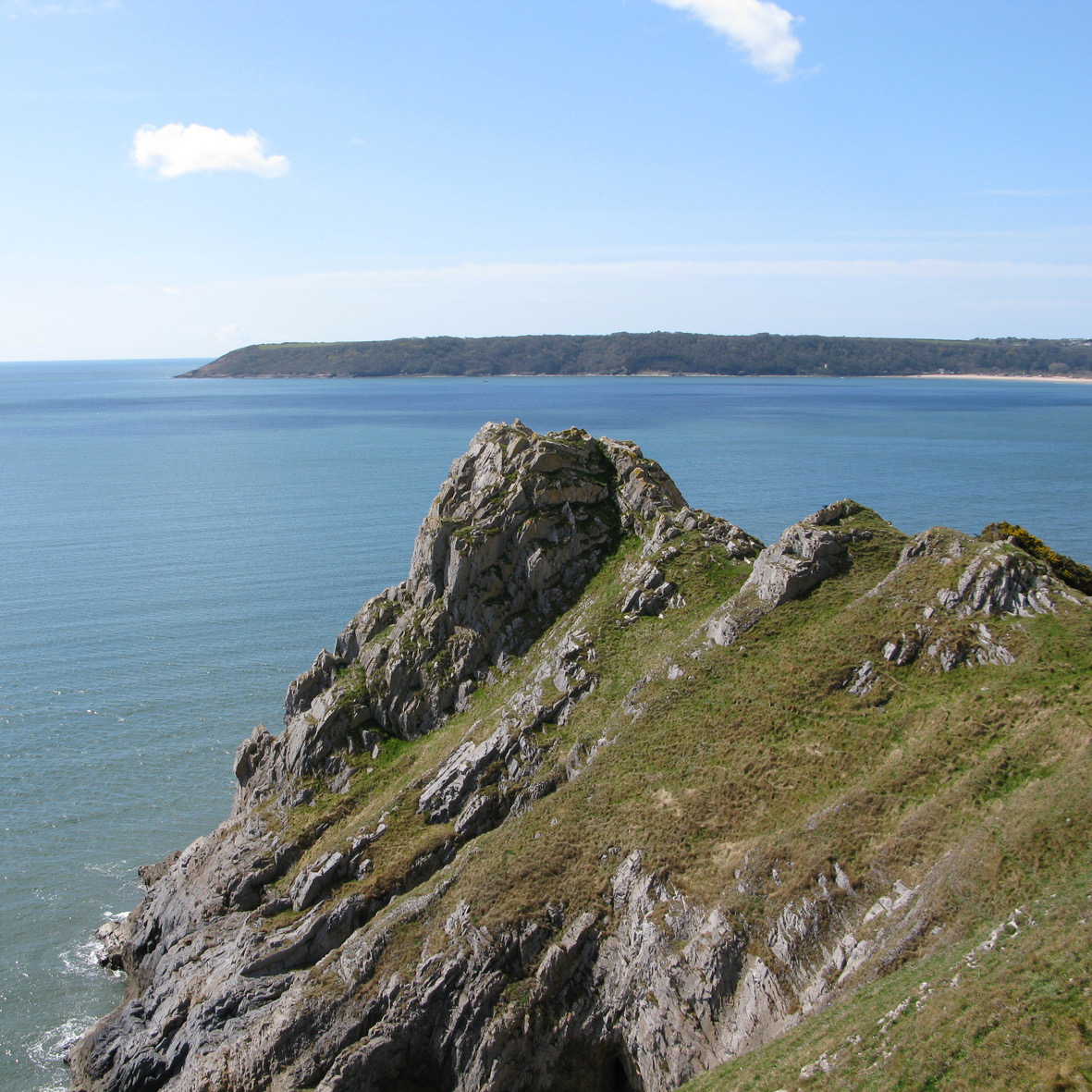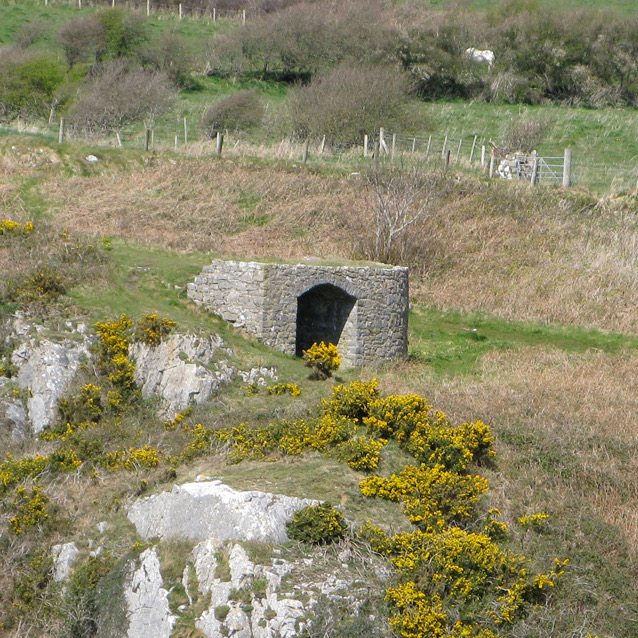Tor Bay
Tor Bay is the next bay west from Three Cliffs Bay, separated by the towering Great Tor (headland to the east). It is accessible on foot, about a 20 minute walk or so from Penmaen Village, where there is limited car-parking. If you want to get away from the crowds then this is an ideal location. There are no facilities close by, but there is a small shop at Parkmill, where you can purchase drinks and sandwiches. It is possible to walk from Parkmill via Three Cliffs, but you will need to allow an hour for this. If you choose the Three Cliffs route then you will probably need to climb the path on to the headland that will take you to the Great Tor.
Walk out onto Great Tor for spectacular views over Three Cliffs Bay to the east, the Bristol Channel to Devon, south, and Oxwich Bay to the west. A path leads down through the dunes from the cliff top.
Swiming is safe. WARNING: There is no Lifeguard patrol or phone on this beach.
Photography © Chris Gill Jones 2017
Penmaen
A scatter of houses on the A4118 South Gower Road, Penmaen (meaning Stone Top) sits beneath the sharp rise of Cefn Bryn, the second highest point on Gower. Surrounding the small village is a rich array of archaeological sites and remarkable scenery.
The most important centres in the vicinity, Parkmill, on the A4118, and Southgate, on the B4436, lie about a mile to the east. At the western end of Parkmill is the Gower Heritage Centre, an engaging cluster of craft workshops, teashops and other family attractions around a 12th-century water mill. At the eastern end of Parkmill are Kilvrough Manor Woods, 18.5 acres of ancient broadleaved woodland. The nearest access to the coast by car is from the car park at the southern end of Southgate.
Some of the most impressive coastline in Gower greets those prepared to walk. Southgate provides access to the footpaths along the majestic limestone Pennard Cliffs, which are dotted with many important bone caves, offering proof that humans arrived on Gower an amazing 19 millennia ago. Not all the caves have yet been thoroughly excavated, and some are too dangerous for amateurs to tackle without local guidance.





